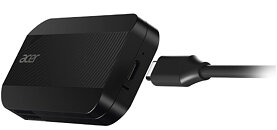Xiaomi Envisions Proprietary Chipset Designs Being Deployed in non-Flagship Mobile Devices
Last Thursday, Xiaomi revealed its proprietary XRING O1 3 nm mobile chipset. After months of rumors, the Chinese firm's highly anticipated first-party chip design was introduced during their special "A New Beginning" event—held in Beijing. During this multipronged product launch celebration, company leadership disclosed the underpinnings of their first-ever flagship processor. According to official descriptions, Xiaomi's pivotal XRING O1 SoC is built on: "a cutting-edge second-gen 3 nm process with 19 billion transistors, features a 10-core CPU and 16-core Immortalis-G925 GPU, delivering flagship performance with industry-leading power efficiency. It also integrates Xiaomi's fourth-gen ISP and a 6-core NPU offering 44 TOPS for advanced AI processing." Days prior to important ceremonies in China, a joint statement—issued by Qualcomm—detailed an extended Snapdragon chipset supply agreement. The XRING O1 processor line will drive forthcoming Xiaomi 15S Pro smartphones and Pad 7 Ultra tablets; reserved for initial "domestic market" launches. Qualcomm's current flagship offerings are technically superior to Xiaomi's fresh effort, but an ever-shifting political landscape could affect future shipments.
Lu Weibing—a company president and partner—has outlined a vision for XRING's eventual expansion beyond a flagship/high-end product tier. Last week's intro firmly positioned the 3 nm part as premium option that will power suitably expensive Android-based mobile devices. Weibing acknowledged that his team has jumped into the deep end: "(for) this platform capability, it is most difficult to work on smartphone flagship SoC, it has high power consumption demand and its technology is extremely complicated. If you can, then you should have the ability to work on flagship smartphone SoC. (Once you) move to work on other chips, it won't be that difficult." Industry moles posit that Xiaomi's XRING division is already a formidable force, in terms of staff headcounts and experience. The department could be absorbing some inspiration from Apple; namely their custom C1 modem chip. The firm's president painted a picture of things to come: "so we want to focus on the flagship SoC, and then we want to make a capable modem for the future. We have to work on 4G and 5G parts—together with 3G—leading to a complete matrix. So that is what we need to do at this stage." Early leaks have indicated the existence of a binned version of the XRING O1 SoC; present within early Xiaomi Pad 7 Ultra tablet samples. In theory, these compromised chips could be deployed in unannounced cheaper products.
Lu Weibing—a company president and partner—has outlined a vision for XRING's eventual expansion beyond a flagship/high-end product tier. Last week's intro firmly positioned the 3 nm part as premium option that will power suitably expensive Android-based mobile devices. Weibing acknowledged that his team has jumped into the deep end: "(for) this platform capability, it is most difficult to work on smartphone flagship SoC, it has high power consumption demand and its technology is extremely complicated. If you can, then you should have the ability to work on flagship smartphone SoC. (Once you) move to work on other chips, it won't be that difficult." Industry moles posit that Xiaomi's XRING division is already a formidable force, in terms of staff headcounts and experience. The department could be absorbing some inspiration from Apple; namely their custom C1 modem chip. The firm's president painted a picture of things to come: "so we want to focus on the flagship SoC, and then we want to make a capable modem for the future. We have to work on 4G and 5G parts—together with 3G—leading to a complete matrix. So that is what we need to do at this stage." Early leaks have indicated the existence of a binned version of the XRING O1 SoC; present within early Xiaomi Pad 7 Ultra tablet samples. In theory, these compromised chips could be deployed in unannounced cheaper products.



























































































